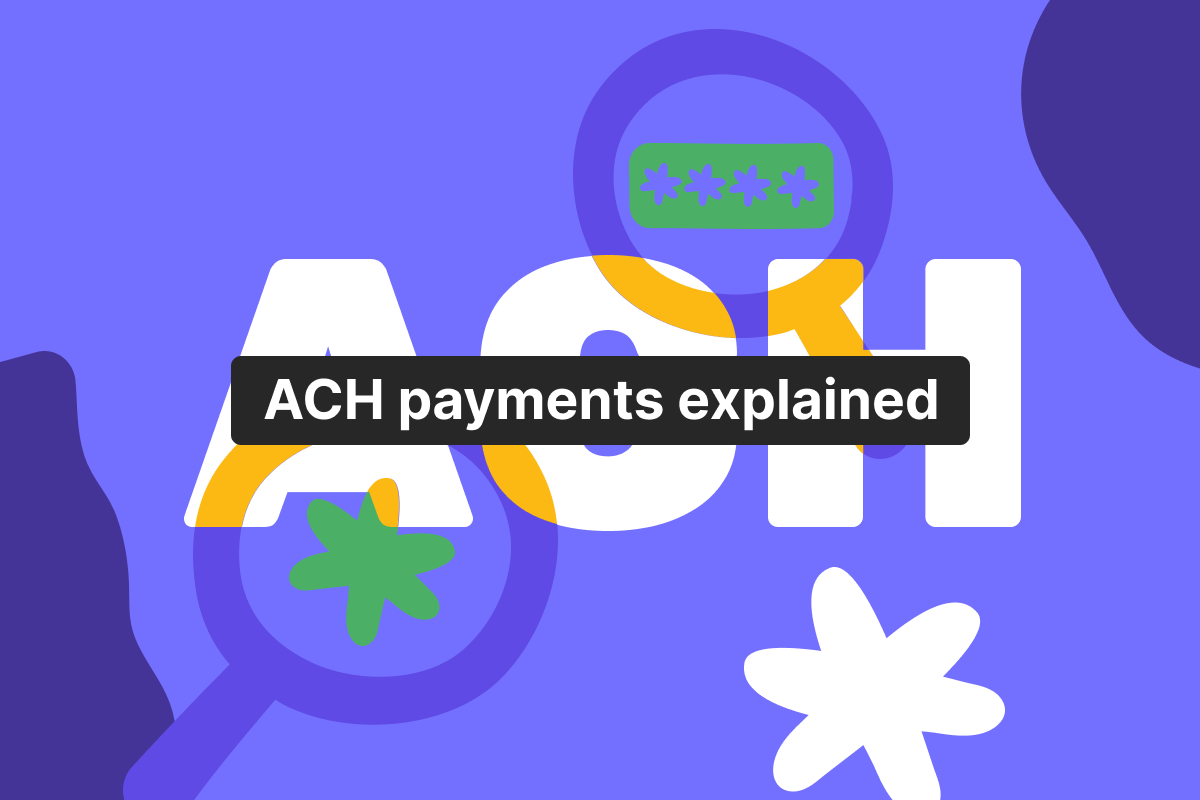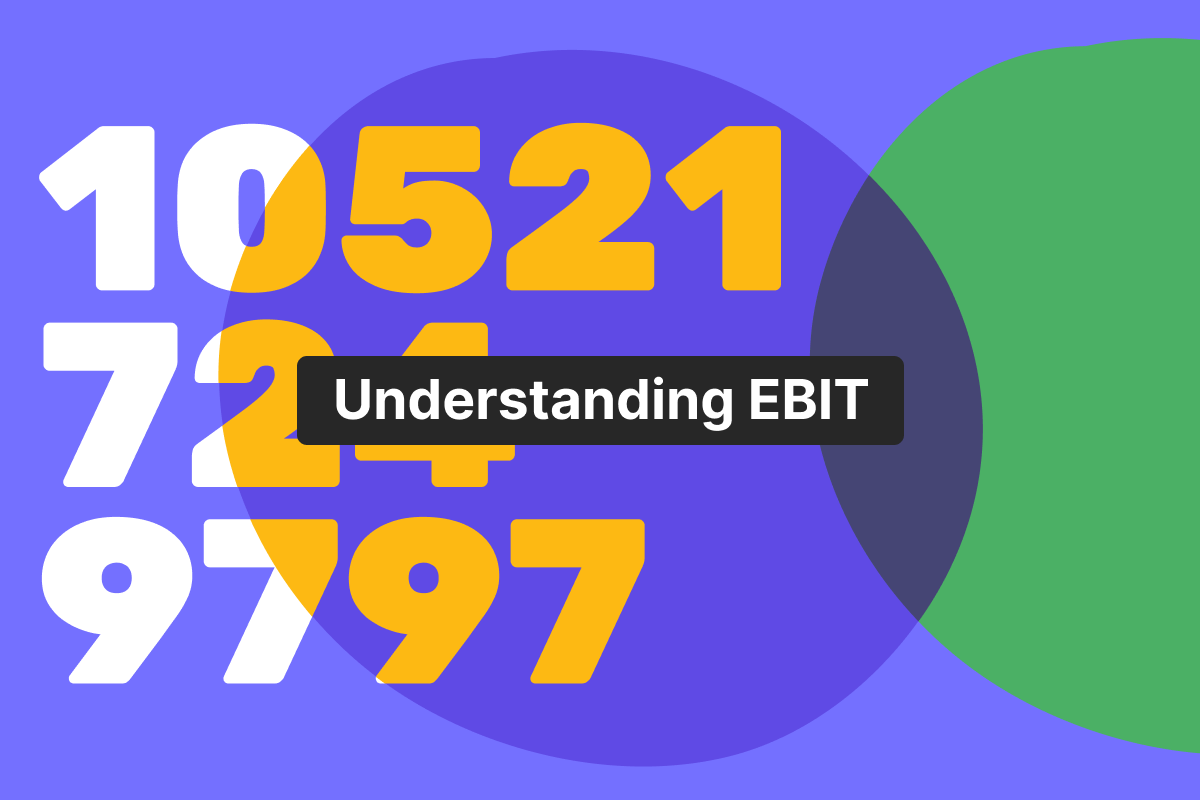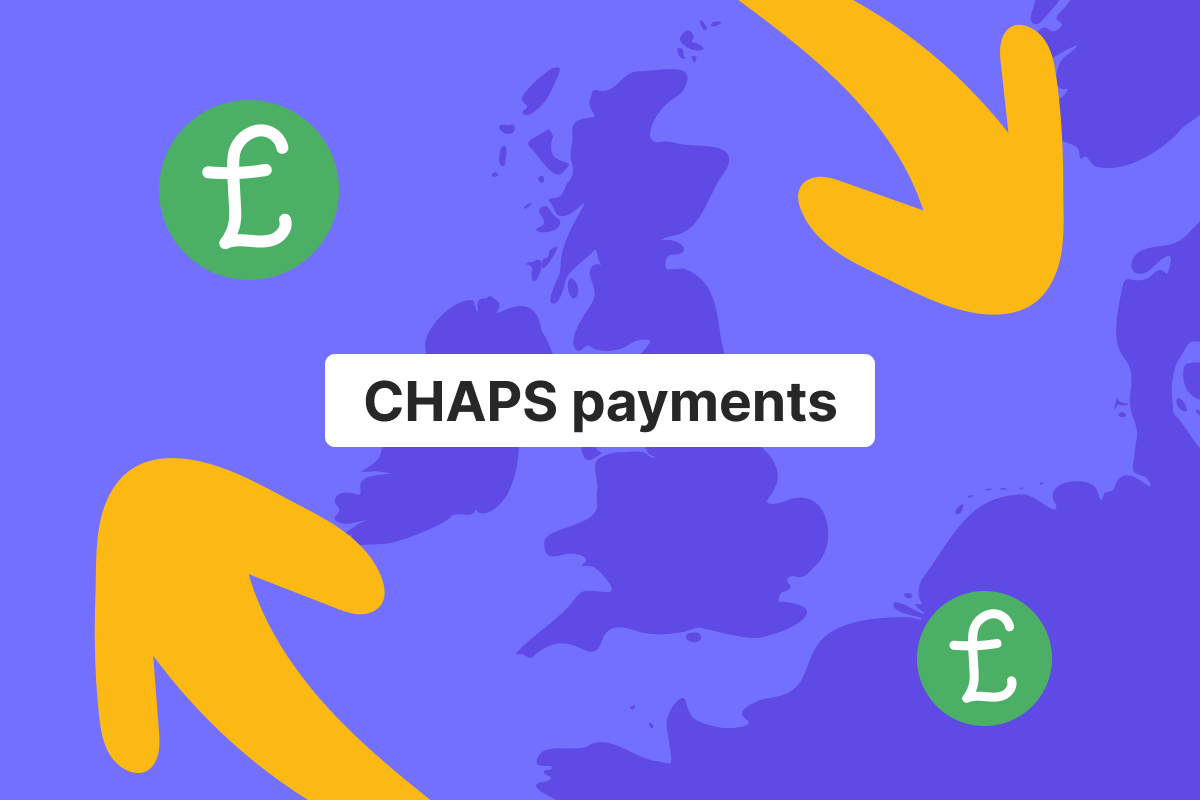Genome Blog / articles / What is an ACH payment? A complete guide to Automated Clearing House transactions
Nov. 14, 2024
ACH payments (Automated Clearing House payments) provide one of the most important ways of moving money between banks in the US.
It is regarded as a highly efficient and secure method of making transfers from one bank account to another, making the ACH transfer process extremely popular in different industries.
What are Automated Clearing House (ACH) payments?
ACH payments are electronic transfers between financial institutions in the US, involving transfers from one financial institution to another across the ACH network.
ACH transfers are typically used for transactions, including bill payments, paychecks, and recurring monthly debits. Social security payments and tax refunds also go through the ACH network.
This centralized network was created in the early 1970s to provide a fast and efficient way of sending relatively small transfers directly to any bank account in the US or its territories. International ACH payments can be carried out as one of the ways of sending international business payments, but this is a lot less common.
Direct deposits (or credit transfers) are made from a sender to a beneficiary. ACH direct payments (debit transfers) are where the person receiving the money starts the transfer process, which is normally for regular payments like monthly subscriptions or bills.
In terms of timeframes, an ACH transfer direct deposit can take up to two business days. Direct payments have to be processed faster, with a limit of the next business day. Some banks charge for sending money across the Automated Clearing House network, but receiving it is always free.
As one of the best-known electronic payment methods, it’s interesting to see how ACH transfers compare to other ways of sending cash, like wire transfers and credit cards.
ACH payments vs. wire transfers
You might use the terms ACH payments and wire transfers interchangeably. The truth is that they have a lot in common. However, this summary of the differences between ACH transfers and wire transfers explains the key differences.
The key point is that Automated Clearing House payments always go through the ACH network, while wire transfers are mainly carried out across the SWIFT network.
The SWIFT network covers over 200 countries where a wire transfer can be sent or received. This means you can use a wire transfer for international transfers, while the ACH network is solely for the US and its territories.
For a domestic electronic money transfer in the US, a wire transfer is likely to be faster than an ACH payment. Expect a wire transfer to arrive the same day, as moving between the two bank accounts will take minutes or hours. ACH transfer requests will often be settled on the same business day but may take longer.
ACH payments vs. credit card transactions
Credit cards offer a highly convenient way of paying for goods and services without having to enter the recipient’s bank account details.
These payments are carried out by networks like Visa and Mastercard, which issue the cards. Financial transactions using credit cards can be carried out virtually anywhere on the planet and at any time of day or night.
How ACH transfers work
The process for setting up ACH transfers is simple. To understand how this is done, we can look at both types of ACH transactions.
ACH direct payments
This is where you authorize a company or organization to take funds from your account on the dates and amounts agreed via an ACH transfer.
To do this, you need to complete an ACH debit authorization form, which the company taking the money will give you. This can be a physical form or an online version. Confirm your bank details and the payment schedule then double-check the details before confirming.
You can see the details of each payment before it’s taken, giving you a chance to make sure it’s all in order. However, once you’ve set up this type of ACH transfer, it will carry on according to the schedule with any additional input from you.
ACH direct deposit process
In this case, you start the process by receiving the other party’s banking details. You need their full name, bank account number, and ABA routing number. You might also require their address and the address of their bank.
Online banking gives you the fastest and most convenient way of completing the ACH transaction. Enter the bank’s app or website as normal and look for the option of paying a bill or making a payment.
You’ll be asked to enter the recipient’s bank account information. The payment amount, currency, and payment date are the other details needed here.
Once you’ve checked the details, you can verify the transaction. If your bank uses two-step authentication or some other verification method, then you might be asked to complete it before the ACH transaction is confirmed.
Types of ACH network transactions
Understanding the different types of ACH transactions will help you see how these transfers work in different situations.
What Is ACH payment by direct deposit
Direct deposits are where the person making the ACH transfer enters the recipient’s banking details in their online banking app to complete a transfer request. With direct deposits, you set up the transfer whenever you want to transfer money, just like wire transfers.
Direct payments
This kind of ACH transfer is made for recurring payments according to a pre-agreed payment schedule.
Business-to-business (B2B)
A B2B ACH payment is made from one business to another. These electronic payments are often used as a low-cost and efficient way of making business payments, such as vendor payments to cover invoices.
ACH debits
These are ACH transfers where the funds are pulled from the payee’s account by the recipient. ACH debit transactions are typically used to make recurring payments, such as monthly or quarterly bills. ACH debits are set up by the person making the payment and then run automatically.
ACH credits
This is where the payee starts ACH transfers by instructing their bank to send money to the recipient. ACH credits form a widely used process for sending money between accounts with financial institutions in the US.
Benefits of using ACH payments
ACH transfers have been popular for many years because of the key benefits they offer. Whether it’s as a way to pay bills, make tax payments, receive wages, or make business payments, the following are among the key advantages offered by this type of transfer.
Low cost
Cost-effectiveness for businesses and individuals is a huge benefit. This sort of electronic transfer is useful for making and receiving payments regularly without losing too much cash in fees.
Security features
As it’s controlled by the National Automated Clearing House Association (NACHA), the enhanced security features make this a safe way of transferring money between NACHA financial institutions. ACH operators need to abide by federal regulations, and the built-in security features include encryption technology and secure data links.
Speed
If you need a same-day business settlement, a wire transfer is a safer option, but you can send money quickly through the ACH payment method, too. It’s a speedy and reliable service that won’t throw up and cause surprise delays.
Setting up ACH payments and Genome’s alternatives
Note that ACH payments are available in the US, so you will need a bank account in the US bank. To set up ACH payments, gather the recipient’s bank account and routing numbers, then log into your bank’s online platform and enter this information when instructing a transfer.
But what if you need to send a payment to the US when you are in Europe? Genome can help!
We offer our business wallet users international SWIFT transfers, which you can send to the US, Canada, and other countries around the world! SWIFT transfers are currently available in USD, CAD, EUR, GBP, PLN, CHF, and JPY.
Here’s how you can access Genome’s international money transfers:
- Open a business wallet inside Genome and confirm that your company is eligible to send SWIFT transfers;
- Go to the Account details menu and select the SWIFT tab. There, you can Get account details to send international transfers;
- Once you have the details, go to the Transfers menu;
- Choose the Bank transfer option and fill out the beneficiary’s details.
Additionally, all Genome’s users get access to regular and SEPA Instant Transfers, allowing you to seamlessly transfer funds within the EU!
Costs and fees associated with ACH transfers
Receiving payments through the ACH system is free, but you might be charged for sending ACH transfers. Each bank has a list of fees that are applied when using the ACH network to process transactions.
Therefore, before sending an ACH transfer, you should consider checking with your bank whether there is a charge or not. For smaller transfers, the fee should be no more than $0.50, but larger transfers may attract a percentage charge from your financial institution.
Another possibility is that you can carry out a certain number of money transfers each month for free before getting charged a fee for any additional ACH transfers. The financial institutions that use the network each pay annual ACH Network Administration Fees to keep the service running smoothly.
Regulations and compliance for ACH payments
Banks and credit unions operating via the ACH network need to comply with the NACHA operating rules, where the rules and responsibilities of all parties are laid out clearly. This explains the structure for fees and how many business days transfers can take.
It ensures that all the current security measures are adhered to. Moreover, fraud and money laundering detection tools are used for secure payment processing.
Key takeaways
ACH payments are a big part of the financial system in the US and will continue to play an important role. By offering a way to make a direct payment from one bank to another, the ACH transfer process allows Americans to send money, pay consumer bills, or receive payments easily.
However, an ACH transfer is quite limited in terms of its reach. Thus, if you want to be able to send payments outside the US, you need to look into other transfer options.
One of the best substitutes for ACH payments is SWIFT transfers, as SWIFT is available in almost every country around the world. If you want to experience the convenience of SWIFT payments, open a business wallet inside Genome and check for yourself!
FAQ
What are the typical processing times for ACH transactions?
ACH transactions can be carried out with same-day settlement. Alternatively, they may be scheduled for the next day or the day after that. The network is open virtually all day and settles payments four times during each day.
Can ACH transactions be reversed?
ACH transfers can be stopped if you catch them in time. If you spot an error, you need to contact the bank making the transfer or the organization that’s requesting it. Provide the full details of the payment to be stopped three days before the date scheduled for payment.
How do ACH payments affect cash flow for small businesses?
The ACH payment process can help small businesses manage their cash flow by allowing faster processing of payments. This gives a predictable cash flow where payments are made without fail on the scheduled dates, with none of the uncertainty of other payment methods.
Are there any transaction limits for ACH payments?
Daily transaction limits for ACH transfers vary from one financial institution to another and according to the type of account held. At the time of writing, a limit of $25,000 daily is the highest you’ll find for a personal account.
What security measures are in place to protect ACH transactions?
The automated clearing house (ACH) network is regulated by NACHA, and all the institutions using it need to comply with their rules. The security measures in place for ACH transfers keep everyone safe by adding encryption and security features to the network.





